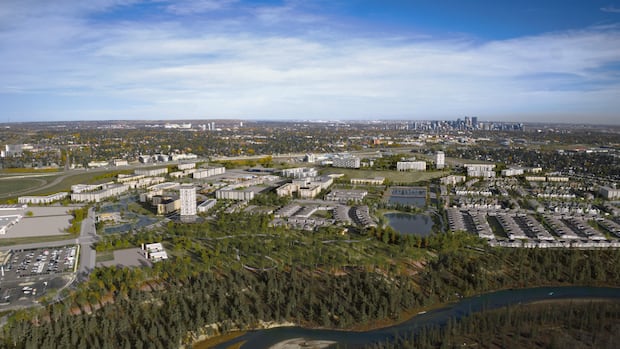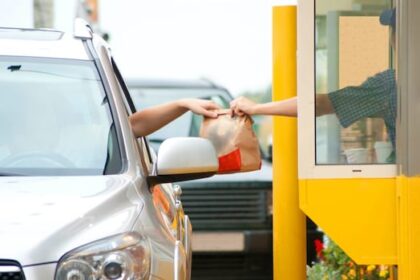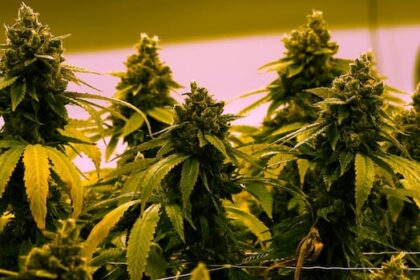LISTEN | Indigenous-led housing is on the rise:Cost of Living9:45Is housing the new First Nation-building project?Jeff Messina and his wife were ready to start the next chapter of their lives. Newly married and eager to begin a family, they dreamed of owning a home that was big enough to raise their kids in — a place with space to play, maybe with a front and back yard.But in Metro Vancouver’s sky-high housing market, that dream seemed impossible.“Vancouver, Burnaby, any of the Lower Mainland cities [in B.C.] were just unaffordable,” Messina told CBC’s Cost of Living.Then, one tip changed everything. His wife, who works in real estate marketing, learned about an Indigenous-led housing development on Tsawwassen First Nation land, south of Vancouver.There, new homes were selling for about $300 per square foot — far below the regional average of $1,000 — and available through a 99-year leasehold agreement where the First Nation retains ownership of the land on which the home is built. That lease was long enough to cover their lifetime and still hold value for resale, said Messina. The couple bought a pre-sale home in 2013 and moved in two years later, just in time to welcome their first born that June. In the search for more affordable housing in Metro Vancouver to accommodate their growing family, Jeff Messina and his wife leased a house on Tsawwassen First Nation. (Submitted by Jeff Messina )Across the country, First Nations near, in, and around cities are leading major housing developments — projects that some say put home ownership, and quality rental housing, within reach for more people, while also driving Indigenous economic growth.Among the largest is Sen̓áḵw, a massive development on Squamish Nation land in Vancouver. Once complete, it will feature over 6,000 units for rent across 11 towers.In Alberta, the Taza project on Tsuut’ina Nation land near Calgary spans about 190 hectares and will include three connected villages, with 6,500 homes planned in its first phase.More housing is set to be developed at Naawi-Oodena by the Treaty One Nations in Winnipeg, and at the Millbrook First Nation in Nova Scotia.Owning a home on First Nations land Michael Janes, a University of Victoria economist who studies First Nations economic development, says homes built on First Nations land are typically sold as leasehold properties, and can take the form of single-family houses, townhomes, condos, or apartments.Unlike freehold properties, where buyers own both the structure and the land beneath, leasehold buyers own only the home itself. The land remains under the First Nation’s ownership.“What you do own is the actual construction … the sticks and two-by-fours, and the cement,” Janes said.Leasehold agreements can be paid upfront, and usually last 40, 50, or 99 years — after which owners are required to renegotiate the lease. This stipulation, Janes says, makes them less attractive to buyers who prefer the certainty of owning both their home and the land it’s on.But it’s also why these homes are so much more affordable, he says.Tsawwassen First Nation leasehold housing under construction, left. Sen̓áḵw development on Squamish Nation land under construction. (Submitted by Tsawwassen First Nation, Ben Nelms/CBC )Josh Wong, a realtor who sells homes across Vancouver, Burnaby and Coquitlam, says leasehold developments — especially those on First Nations land — are steadily growing in number and popularity.He says they give buyers access to desirable neighbourhoods they might otherwise not have been able to afford. In kʷasən Village, a housing development by the Musqueam Indian Band and Tsleil-Waututh Nation within the city of Burnaby, homes are selling for less than $1,000 per square foot, compared to $1,200 to $1,300 for similar freehold homes nearby.WATCH | kʷasən Village is Burnaby’s first Indigenous-led housing development:Burnaby’s first Indigenous-led development in final planning stageBurnaby Coun. Sav Dhaliwal talks about how city council is moving forward with Kwasen Village, a 16-hectare development project led by Musqueam Indian Band, Tseil-Waututh Nation and Aquilini Development. Of the clients he’s helped to purchase leasehold homes, most are either first-time buyers or retirees downsizing.“I feel like this trend is going to be more prevalent as time goes on, just because it allows first-time home buyers to be able to step into a home ownership at a fraction of the cost compared to freehold,” said Wong. Creating homes feels good, says chief Chief Laura Cassidy of the Tsawwassen First Nation says it gives her a sense of pride to help address Metro Vancouver’s housing shortage. “It just makes you feel good to create homes,” said Cassidy.Currently, the Nation’s developments include a mix of apartments, condos, townhomes and single-family homes, serving everyone from young families to retirees. And Cassidy says the property taxes from leaseholders go right back into the community to help fund new infrastructure and services.Tsawwassen First Nation Chief Laura Cassidy says their housing developments provide much-needed homes in the country’s housing crunch, while also fostering economic growth for the Nation. (Submitted by Tsawwassen First Nation )For example, a youth centre that opened in February 2021 gives young people a chance to join digital media, arts, cooking and other programming, while the Elders’ centre, which opened earlier this year, has become a cherished gathering place that honours the community’s seniors, says Cassidy. Next on the horizon are an administration building and a large recreation centre, set to offer a wide range of programs — not only for Nation members but also for those leasing Tsawwassen lands.“I think it’s reconciliation for a lot of First Nations when they look at this for us … [it’s] giving us the opportunity to move forward in a good positive way,” said Cassidy. More than 5,000 leaseholders now call Tsawwassen First Nation home, says Cassidy, with room for 10,000 as the community expands. ‘I’m happy we moved here’ When their sons grew up and moved out, Bernadette Kudzin and her husband decided that it was time to downsize. In 2016, they settled in Stahaken, a community built on land leased from the Tsawwassen First Nation. The 1990s home they bought had about 70 years left on its 99-year lease, she says, and was more affordable than similar homes in the nearby city of Delta where they raised their family. But affordability, she says, wasn’t the only draw. “There are lots of beautiful trees nearby, and many homes have stunning views of the Lower Mainland or the ocean,” said Kudzin.An aerial photo of the Tsawwassen Mills mall during its early phase of construction. The mall is located near leasehold properties on Tsawwassen First Nation. (Tyler Garnham)For Kudzin, the sense of community has been just as rewarding as the home itself. She says she enjoys participating in regular community events hosted by the Tsawwassen First Nation, including on National Day for Truth and Reconciliation and National Indigenous Peoples Day, where leaseholders are welcomed to join. “I’ve learned a lot about the West Coast First Nations, and it’s really exciting to be part of one of their feasts,” said Kudzin. “The celebrations feature dancers, performers, drummers, and the food — there’s always salmon and crab.” “It’s just very welcoming. I’m happy we moved here.”
Could a rise in Indigenous-led developments move the needle on B.C.’s housing shortage?











